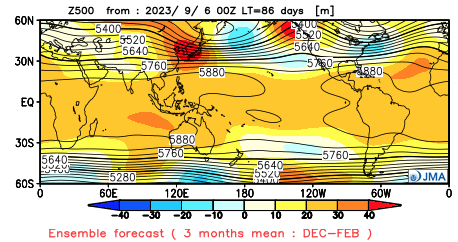Updated 09.08.23 @ 7:50a
You must be logged in to view this content. Click Here to become a member of IndyWX.com for full access. Already a member of IndyWx.com All-Access? Log-in here.

Sep 08
Updated 09.08.23 @ 7:50a
You must be logged in to view this content. Click Here to become a member of IndyWX.com for full access. Already a member of IndyWx.com All-Access? Log-in here.
Permanent link to this article: https://indywx.com/video-cold-front-serves-up-the-coolest-air-of-the-young-meteorological-fall-season-mid-next-week-warmth-returns-late-september/
Sep 07
Updated 09.07.23 @ 7:15a
September has opened significantly warmer than normal across the northern Plains and to a lesser extent into the southern Plains and along the northern tier. Indianapolis is running 5° above average through the 6th. We’ll chip away some at those toasty anomalies over the course of the next week, but still anticipate the month finishing slightly warmer than normal as a whole. We’re also running dry- more than half an inch below normal to open the month.

As we look ahead to the upcoming couple of weeks, the combination of the Madden Julian Oscillation sneaking into Phase 4, combined with a strongly positive PNA should help lead to more of a trough across the eastern portion of the country.


The NEW JMA Weeklies show that trough and associated cooler pattern (not cold by any means, but instead slightly below normal overall) taking up shop in the Week 1 and Week 2 time period below.


The latest ensemble guidance is also on board with the more seasonal look, especially compared to how the month opened.



Overall, the dry start to the month is anticipated to persist through the remainder of September as a whole.

Jumping ahead, the JMA seasonal data also updated today. In short, the model shows a warm fall giving way to a warm start to the winter before potentially taking a colder mid and late winter turn. Still far too early to put much stock in the specifics from this distance. The next couple of months will be very telling with the migration (or lack thereof) of warmest central PAC sea surface temperatures along with modeled trends deeper into the winter. Long ways to go; stay tuned…
JMA meteorological (Dec. through Feb.) winter idea:



Permanent link to this article: https://indywx.com/long-range-chatter-new-jma-data-on-winter/
Sep 06
Updated 09.06.23 @ 6:23a
You must be logged in to view this content. Click Here to become a member of IndyWX.com for full access. Already a member of IndyWx.com All-Access? Log-in here.
Permanent link to this article: https://indywx.com/video-does-the-theme-continue-of-models-being-forced-to-play-catch-up-to-cooler-patterns/
Sep 05
Updated 09.05.23 @ 7:55a
You must be logged in to view this content. Click Here to become a member of IndyWX.com for full access. Already a member of IndyWx.com All-Access? Log-in here.
Permanent link to this article: https://indywx.com/video-getting-to-be-that-time-of-year-where-things-can-get-busy-quickly-trending-unsettled-and-cooler-to-close-the-week/
Sep 03
Updated 09.03.23 @ 9:22a
The extended stretch of quiet weather has given us time to finalize the initial set of analogs we’ll lean in on for the upcoming winter. Speaking of that, our annual Winter Outlook will be published Friday, October 27th.
While long range seasonal models differ on the placement of warmest sea surface temperature (SST) anomalies, we’re refraining from going “all-in” on a modoki Nino event as of now. This is something that no doubt will have our attention as we go through the course of the next several weeks. It’ll be interesting to watch the trends. The modoki, or central based, warm event would go a long way in upping the ante for a colder, stormier winter, locally. This is something that’s possible but we still have more questions than answers with how this evolves.
SST configuration as of September 1, 2023:

Our initial set of analogs includes the following years:
We’re looking at 1st year Nino events of moderate to strong intensity. (Most modeling peaks this event in the +1.5 to +2 range in Nino region 3.4). In addition, we’re also looking at critical SST configuration in the NPAC and northwest Atlantic. Out of the list above, heaviest focus as of now centers on ’82-’83, ’91-’92, ’02-’03, ’09-’10, and ’15-’16.
A blend of those years gives us the following temperature and precipitation pattern for meteorological winter:
Temperature

Precipitation

There’s a lot more that goes into our seasonal outlooks than simply taking a blend of analogs, but this will serve as a nice starting point from this distance. It’ll be very interesting to watch the migration (or lack thereof) of warmest SSTs currently “tucked in” to Nino regions 1+2 and 3 into potentially a more central, or region 3.4 event.
Make it a great Labor Day weekend and know we’ll have much more to come in the weeks ahead on our winter ’23 – ’24 thoughts…
Permanent link to this article: https://indywx.com/initial-analog-set-for-winter-23-24/